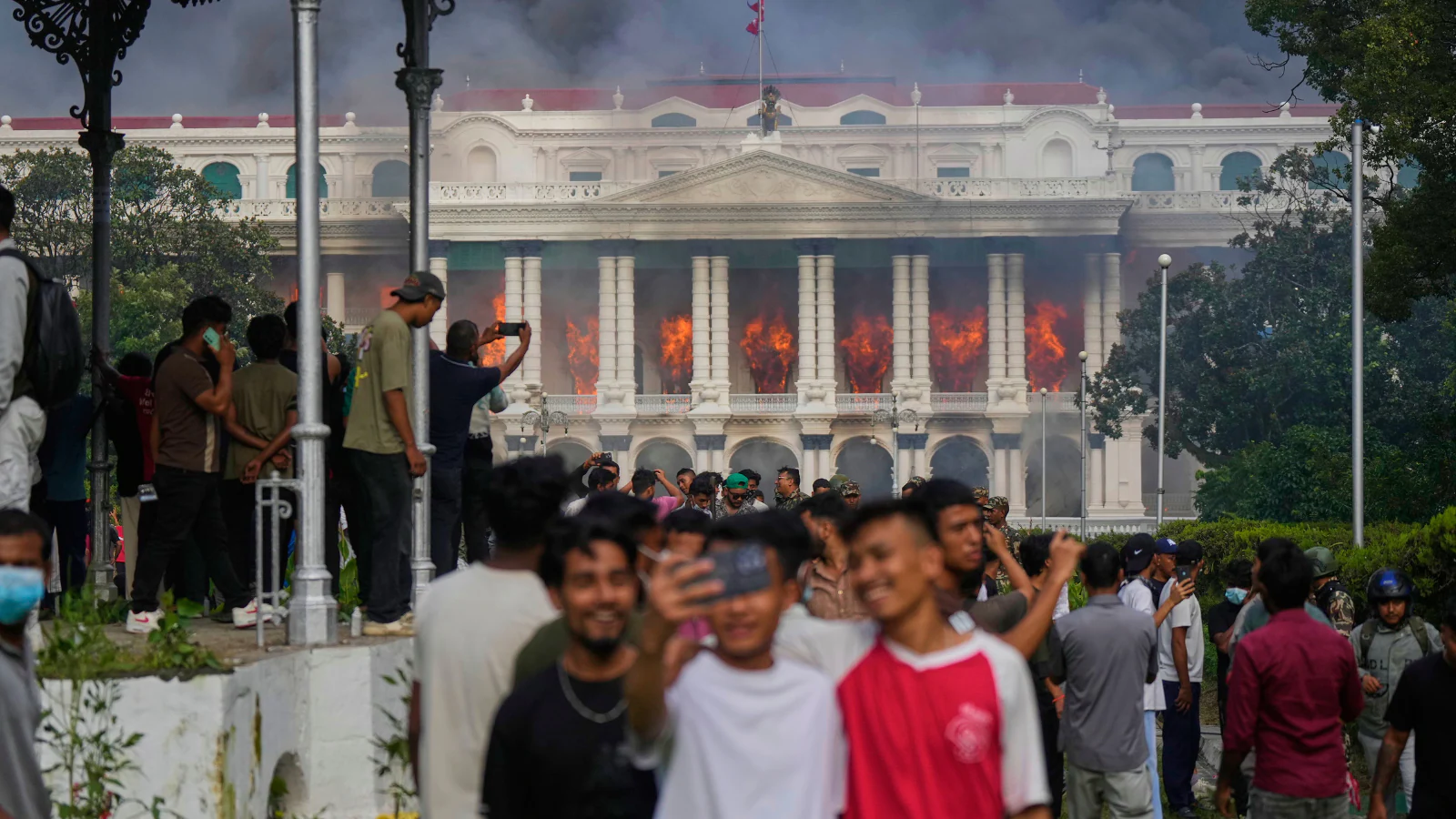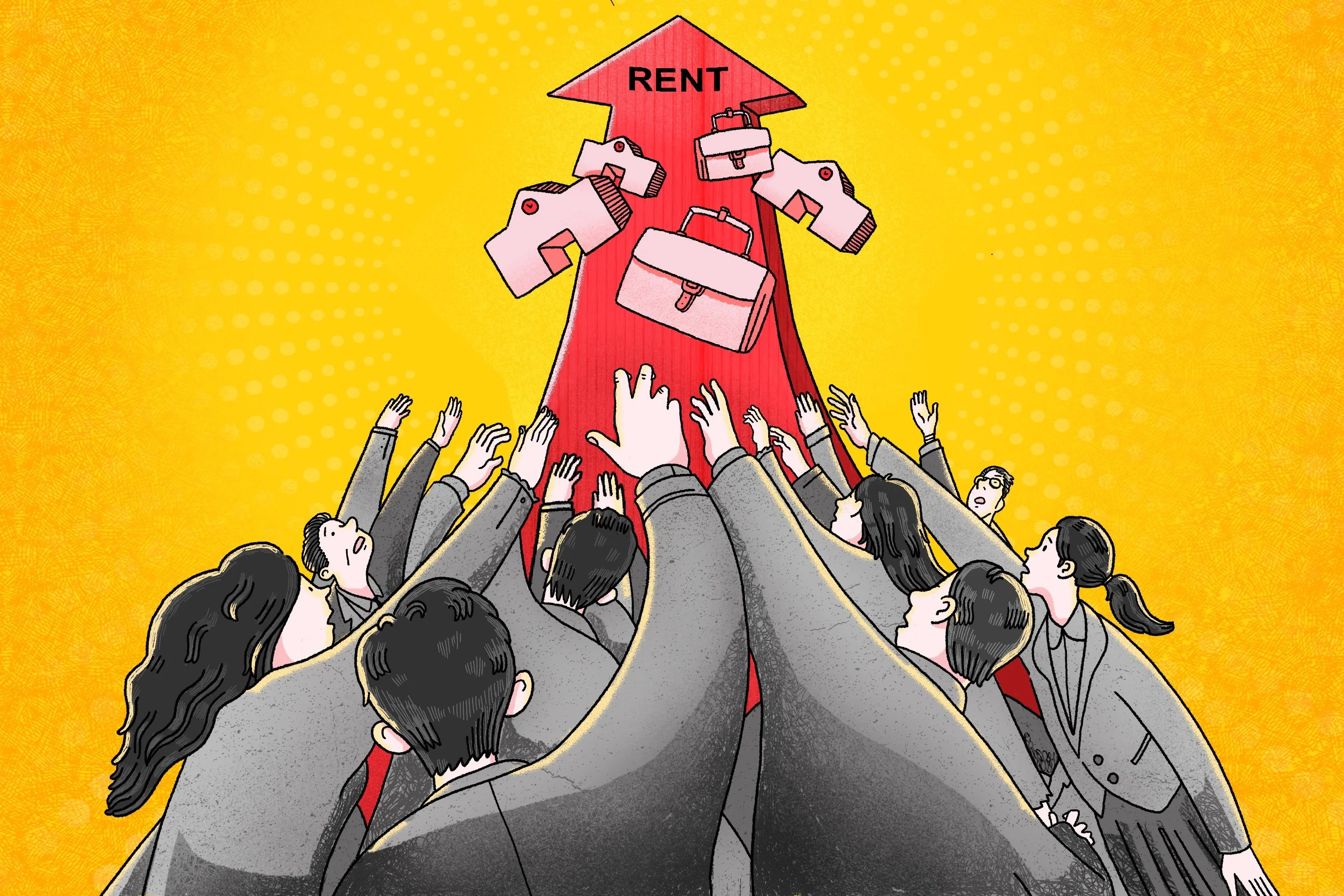By Akhileshwar Sahay,News18
Copyright news18

On the night of Friday, September 12, the no-nonsense 73-year-old crusader against corruption, Sushila Karki — former Chief Justice of the Supreme Court — was sworn in as the interim Prime Minister of Nepal. Her ascent to the seat of power followed two days of intense negotiations between Nepalese President Ramchandra Paudel, Army Chief Ashok Raj Sigdel, and select representatives of the protestors, nicknamed “Gen-Z”.
Affirmation Through Discord
Sushila Karki emerged as the unanimous choice of the Gen Z protest representatives. In a remarkable show of democratic engagement, ordinary Nepali citizens made smart use of technology by conducting a transparent poll on who should lead the country next.
Karki was the undisputed winner of the poll conducted on Discord — by September 10, the server had seemingly reached a consensus on Nepal’s next leader.
She subsequently met President Ramchandra Paudel and Army Chief General Ashok Raj Sigdel on September 11.
Dissolution Of House
After administering the oath of office to Karki late on September 12, the Office of the President issued a further statement: “The President has dissolved the House of Representatives…”
The statement also announced that elections have been scheduled for March 5, 2026.
Eight political parties of Nepal have protested the dissolution of the Parliament, terming it unconstitutional.
Interim Cabinet
Nepal’s interim Prime Minister Sushila Karki expanded her Cabinet on Monday, just days after assuming office, with the induction of three new ministers. According to officials at the Prime Minister’s Office:
Former Nepal Electricity Authority chief Kulman Ghising will head the Ministry of Energy, Urban Development and Physical Infrastructure.
Senior advocate Om Prakash Aryal will lead the Ministry of Law and Home Affairs.
Former finance secretary Rameshwor Khanal will take charge of the Ministry of Finance.
Challenges Galore
Sushila Karki’s Cabinet faces several daunting challenges — restoring law and order, rebuilding the Parliament, the Supreme Court and other key buildings that were torched during the unrest, and reassuring the Gen Z protestors demanding change, alongside others worried that Nepal’s young democracy and constitutional framework could be derailed.
Two of her biggest tasks will be ensuring free and fair elections and bringing to justice those responsible for the recent unrest.
But what brings Sushila Karki to the helm of power? Below, I chronicle the recent chain of events that led to her appointment.
Here’s the story.
The Implosion
It all began on September 8, when tens of thousands of young people, most of them in their early twenties or in their teens, in school uniforms, came out to protest against corruption, nepotism, inequality, and large-scale unemployment, with the battle cry: “Ab Pujyo – Now it is enough.”
Their anger was further fuelled by the government’s ban on social media platforms. The implosion looked spontaneous, but it had been in the making for decades.
Mayhem And Massacre
Rewind to Sunday, September 7. On that day, Prime Minister of Nepal KP Sharma Oli ridiculed the youth planning a major protest in Kathmandu the next day. He said: “By calling themselves Gen Z, protestors seemed to believe they could demand whatever they wanted.” Fast forward to Tuesday. In less than 48 hours, Oli was gone with the wind.
In between, 19 innocent people were killed in police firing, which further inflamed the passion of the protestors. The very next day, protestors ran amok, torching and destroying Parliament, the Supreme Court, the offices and homes of major politicians, media houses, hotels, and other infrastructure. The combined toll from the clashes now stands at 72 dead and more than 1,300 injured.
In The Making For Decades
At first glance, the Gen Z uprising appears to be a sudden, spur-of-the-moment action, fanned and helped by the massive proliferation of smartphones and the ubiquitous reach of social media in the country. It is not.
It has been a crisis in the making for decades. Nepal, a country of 30 million people, has one of the highest youth populations — 56 per cent of Nepal’s population is below 30, compared to 52 per cent in India, 37 per cent in Bangladesh, and 30 per cent in Sri Lanka.
Also, as per World Bank 2024 data, Nepal has the lowest per capita income in South Asia — USD 1,447.3. This situation is further worsened by the fact that, according to the same estimates, Nepal has a youth unemployment rate of over 20.8 per cent, a situation that is rapidly deteriorating.
Such conditions are a natural breeding ground for protests, unrest, and eventual rebellion. But why the sudden protest? Why now? And what is the root cause?
The Root Cause Analysis
Deep-rooted and fast-growing inequality between the ruling elite and the teeming millions is the root cause of Nepal’s sudden implosion. I say this with a reasonable degree of confidence, having spent a considerable amount of time on the ground in Nepal, including during the crunch years of:
2006, when the Comprehensive Peace Agreement was signed between Maoists and the government, bringing to an end a 10-year civil war that killed more than 17,000 people
and 2008, when King Gyanendra left the Narayanhiti Palace in Kathmandu on 11 June, moving into the Nagarjuna Palace
I undertake below a root cause analysis of the crisis in two parts — the proximate cause and the historical backdrop.
Proximate Cause
The current Gen Z uprising in Nepal represents a generational revolt against systemic corruption, economic hopelessness, and what the youth perceive as complete betrayal by the ruling class.
While the government’s ban on major social media platforms like Facebook, Instagram, and WhatsApp served as the immediate catalyst, it merely added fuel to the fire of deeper grievances that had been simmering for years.
Rewinding further, Nepal’s endemic corruption, nepotism, and chronic political instability are deep-rooted issues. Things worsened during the musical chairs era of 14 different prime ministers since the monarchy’s abolition in 2008, with none completing a full term.
A viral “Nepo Kids” campaign on social media in recent years had been exposing how politicians’ children flaunted luxury lifestyles — foreign degrees, expensive cars, holiday villas — while ordinary citizens struggled with unemployment so severe that over 740,000 Nepalis left for foreign employment in the past year alone.
With smartphone penetration at 75 per cent, Nepal’s young, smart, and restive population refuses to accept entrenched corruption and nepotism as the “new normal.”
What appears to be a leaderless, spontaneous movement is actually driven by deep-rooted frustration with a political system that has failed to deliver jobs, opportunities, or honest governance to an entire generation.
To understand the existential crisis of Nepal, I delve deeper into its history.
The Historical Backdrop
Nepal’s modern political journey — from the British era to today’s youth-led upheaval — has been one of repeated crises, with each crisis pushing the country back into the abyss. Here is the Nepal story in brief:
Anglo-Nepalese War (1814–1816): The Anglo-Nepalese (Gurkha) war (1814–1816) culminated in the Treaty of Sugauli (1816), which led to Nepal’s defeat and forced the country to cede large territories (Kumaon, Garhwal, parts of the Terai). It fixed much of today’s border and gave the British East India Company a foothold in Nepal, including in matters of foreign policy.
Rana Dynasty Autocracy (1846–1951): The aftermath of the 1846 Kot Massacre in Nepal saw the rise of Jang Bahadur Rana and the establishment of the Rana dynasty, which ruled for over a century. Following the massacre of most of Nepal’s elite nobles, Jang Bahadur became Prime Minister and later exiled the king and queen, establishing a hereditary rule. This transformed Nepal into a de facto dictatorship under the Rana family, which severely restricted access to education while consolidating its grip on power.
A century of Rana rule drove ordinary Nepalese citizens into illiteracy and penury.
Monarchy Returns (1951): The anti-Rana movement culminated in the signing of a tripartite agreement between the Ranas, the Nepali Congress, and King Tribhuvan in Delhi. Finally, on 18 February 1951, King Tribhuvan returned to Nepal as head of state.
Brief Tryst with Democracy (1951–1960): The decade began with a revolution that overthrew 104 years of Rana rule, ushering in a new era for Nepal. It also saw the setting up of a coalition government, which soon collapsed. After the death of King Tribhuvan, King Mahendra ascended the throne. A new democratic constitution was adopted, and following the 1959 elections, the Nepali Congress formed a government with BP Koirala as Prime Minister. But soon it was coup time.
Coup Time (1960): After barely 18 months of the Koirala government, King Mahendra launched a coup d’état on 15 December 1960. He dismissed the government, suspended the constitution, and imprisoned political leaders, including Koirala.
With this, Nepal slid back into a period of monarchical rule and political anarchy.
Back to Monarchy and Anarchy (1960–1990): Established on 5 January 1961, King Mahendra’s partyless Panchayat system entrenched all powers in the monarchy under the guise of grassroots democracy. His justification was that it was a system “suitable to the soil” of Nepal.
The four-tier pyramidal structure outlawed political parties, with the king wielding supreme authority — appointing and removing Supreme Court judges at will, controlling the Public Service Commission, serving as commander-in-chief of the armed forces, and amending the constitution whenever he chose.
Within a short span, Mahendra effectively reclaimed the unlimited power once held by Prithvi Narayan Shah in the 18th century, transforming Nepal from a nascent democracy into an absolute monarchy that would persist until the 1990 Jana Andolan forced its dismantling. And the real sufferers of this anarchy were Nepal and its poor citizens.
Jana Andolan I (1990): A 50-day nationwide uprising shattered three decades of absolute monarchical rule and ushered in multi-party democracy. Beginning on 18 February 1990 — now celebrated as Democracy Day — the movement united opposition parties, including the Nepali Congress and the United Left Front, in an unprecedented alliance against King Birendra’s Panchayat system.
The pivotal moment came on 8 April 1990, when King Birendra capitulated and lifted the 30-year ban on political parties, followed by a midnight address on 24 April announcing the reinstatement of Parliament. This historic victory not only ended the autocratic Panchayat era but also established a constitutional monarchy and multi-party democracy, fundamentally transforming Nepal’s political landscape — despite the instability that followed.
But the gains were short-lived. Soon began the Maoist insurgency in 1996, which degenerated into a civil war with immense collateral damage. In between came the royal palace massacre of 2001.
Royal Palace Massacre (2001): Crown Prince Dipendra killed King Birendra, Queen Aishwarya, and others before dying himself. Gyanendra became king. The trauma and conspiracy theories that followed further eroded the monarchy’s legitimacy.
Maoist Insurgency (1996–2006): After 30 years of autocracy, Nepal soon faced a Maoist-led insurgency turned civil war, dubbed the “People’s War”, launched to topple the monarchy and restructure the state.
Around 17,000–18,000 people died; tens of thousands were displaced. Both sides committed human rights abuses, and the country’s economy was devastated.
The Comprehensive Peace Accord (CPA) signed on 21 November 2006 ended the war and paved the way for elections to a Constituent Assembly.
Jana Andolan II (2006) & Abolition of Monarchy: Mass protests in 2006 forced King Gyanendra to cede power. In 2008, the monarchy was abolished and Nepal became a federal democratic republic, but nothing changed on the ground.
Collateral Damage
The real damage of the decade-long Maoist insurgency (1996–2006) was the total devastation of Nepal’s economy, with the annual growth rate plummeting, slashing average annual growth from 4.9 per cent in the pre-conflict decade to a mere 1.9 per cent during 2002–2004, while claiming over 13,000 lives and displacing more than 200,000 people.
The conflict’s economic toll was staggering, with various studies estimating total costs between 8–10 per cent of GDP, while the National Peace Campaign calculated damages at USD 66.2 billion for the 1996–2003 period alone. Development expenditure declined sharply as physical infrastructure was systematically destroyed, economic disruptions multiplied, and investment fled the country.
One expected that post-2008, with the return of democracy, Nepal’s economy would have improved, bringing some cheer to citizens. It did not happen. The post-monarchy era from 2008–2024 witnessed Nepal’s economy experiencing significant volatility, with GDP growth contracting to -2.40 per cent in 2019 and seldom achieving pre-conflict growth of 4.95 per cent, with one exception in 2016 when growth touched 9.00 per cent.
This rollercoaster performance reflects Nepal’s ongoing struggle to survive amid persistent political instability, with 14 different governments since 2008 hampering long-term policy implementation and investment confidence. The endemic corruption of the ruling class has further worsened the situation, due to the rent-seeking political economy in which one king was replaced with multiple kings, queens and princes sharing the bounty of resources, while the common man looks bewildered in the wilderness.
This is the root cause of the latest Gen Z/student-led uprising, tapping deeper anger over corruption, nepotism, joblessness, and a stagnant political class.
From Here, Where
Interim Prime Minister Sushila Karki has her task cut out — restoring order, creating a culture of accountability, and ensuring a transparent federal election within six months. But her tasks are akin to squaring the circle, and will need the full trust and cooperation of rudderless Gen Z leaders, established parties, the entrenched bureaucracy, and security forces.
Also, experience from around the world shows that such revolutions do bring down regimes — but often fail to succeed in bringing the desired changes. That brings the biggest task before Sushila Karki: preventing the backsliding of Nepal, which the country can ill afford.
I wish you good luck, Prime Minister Sushila Karki. Thy time begins now.
The author is a multidisciplinary thought leader with Action Bias, India-based international impact consultant, and keen watcher of changing national and international scenarios. He works as president, advisory services of consulting company BARSYL. Views expressed in the above piece are personal and solely those of the author. They do not necessarily reflect News18’s views.



